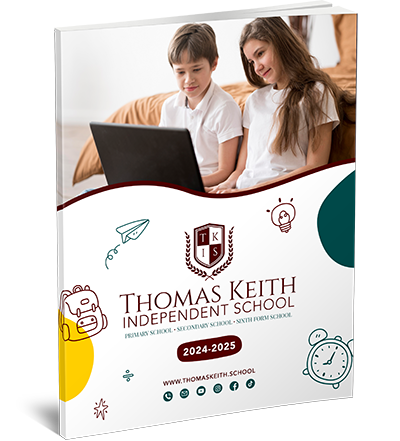
Choosing the Optimal Approach to Reading Instruction in Home Schooling
Different Approaches to Teaching Reading in Homeschooling
When parents choose homeschooling, they can personalise their child’s education, including how they learn to read. There are several different approaches to homeschool reading curriculum, each with benefits and considerations.
Phonics is a widely embraced approach that helps children grasp the relationship between letters and sounds. Phonics-based programs introduce letter-sound correspondence systematically, enabling children to decode words and develop strong reading skills. This approach emphasises building a solid foundation of phonetic knowledge before moving on to more complex reading tasks.
Another approach is the whole language method, which takes a more holistic approach to reading instruction. By immersing children in meaningful contexts like captivating stories and real-life experiences, complete language instruction nurtures their love for reading. This approach emphasises comprehension and language development, allowing children to connect with texts more deeply.

Many homeschooling families find that a balanced approach, blending phonics and whole language elements, brings the best of both worlds to their child’s reading education. This approach recognises the importance of phonics instruction while providing opportunities for children to engage with authentic literature and develop a love for reading.
Phonics vs. Whole Language: Choosing the Right Reading Curriculum for Your Child
Selecting the perfect reading curriculum for your child is important throughout homeschooling journey. Two popular approaches to reading instruction are phonics and whole language, each with its strengths and considerations. Understanding the differences between these approaches can help you make an informed choice for your child’s education.
Phonics-based curricula emphasise the relationship between letters and sounds. These programs introduce letter-sound correspondence gradually, helping children decode words and develop strong reading skills. Phonics instruction provides a systematic and structured approach, building a solid foundation for reading. It is especially beneficial for children who prefer a structured learning environment and those who struggle with decoding words.
On the other hand, whole language curricula take a more holistic approach to reading instruction. These programs focus on developing language skills and comprehension through engaging texts and meaningful context. Complete language instruction encourages children to make connections between words, ideas, and experiences, fostering a love for reading. This approach is well-suited for children who enjoy storytelling, have strong language skills, and thrive in a creative and flexible learning environment.
Enhancing Reading Comprehension Skills in Homeschooling
Reading comprehension is crucial for children to understand and interpret written texts effectively. Parents can enhance their child’s reading comprehension skills by homeschooling through various strategies and activities. Here are some practical approaches to consider.
Firstly, fostering a reading-rich environment is essential. Surround your child with various age-appropriate books, magazines, and other reading materials. Please encourage them to read independently and aloud and discuss the texts together. This not only improves comprehension but also enhances vocabulary and critical thinking skills.
Secondly, teach and model active reading strategies. Show your child how to preview a text by examining the title, headings, and illustrations and how to make predictions based on this information. Please encourage them to ask questions while reading and to summarise what they’ve read after each section. These techniques promote engagement and a deeper understanding of the material.
Thirdly, incorporate reading comprehension activities into your homeschooling routine. Use graphic organisers to help your child organise their thoughts and identify critical elements of a text. Engage in meaningful discussions about the texts they read, encouraging them to express their opinions and support them with evidence from the text.

Lastly, leverage technology and online resources. Numerous educational websites and apps offer interactive reading activities and comprehension exercises. These resources can provide additional practice and engagement in a fun and engaging way.
Addressing Reading Difficulties and Choosing Appropriate Interventions in Homeschooling
When homeschooling, parents play a vital role in identifying and addressing their child’s reading difficulties. By understanding the nature of these difficulties and choosing appropriate interventions, parents can provide the necessary support to help their child become a confident reader. Here are some strategies to consider.
Firstly, recognise the signs of reading difficulties. These may include struggling with decoding words, poor fluency, difficulty with comprehension, or reluctance to engage in reading activities. If you notice persistent issues, seeking professional guidance from an educational specialist or reading tutor who can provide a comprehensive assessment may be necessary.
Once the reading difficulties are identified, parents can choose appropriate interventions tailored to their child’s needs. One practical approach is providing explicit and systematic phonics instruction. This involves breaking down words into phonemes and teaching the corresponding letter-sound relationships. By reinforcing these foundational skills, children can improve their decoding abilities.
Additionally, incorporating multisensory techniques can benefit children with reading difficulties. This involves engaging multiple senses during reading instruction, such as sight, hearing, and touch. For example, using manipulatives or sensory materials to reinforce letter-sound associations can enhance learning and retention for some children.
Furthermore, consider incorporating assistive technology tools. Text-to-speech software, audiobooks, or speech recognition programs can support struggling readers by providing auditory support or helping them overcome writing challenges.

A supportive and nurturing environment is essential for the child to persist in their reading journey. Celebrate their progress and provide opportunities for them to read materials they find exciting and enjoyable.
Exploring Online Reading Resources and Apps for Homeschooling
In today’s digital age, homeschooling families have access to many online reading resources and apps that can enhance their child’s literacy skills. These resources provide engaging and interactive experiences, making learning to read enjoyable. You can seek online resources and apps worth exploring for homeschooling.
A resource that you can try is Duolingo ABC. Duolingo ABC is an app designed to teach children to read and write. It combines interactive activities, letter tracing, and storytelling to introduce phonics, sight words, and basic grammar concepts.
Maintaining a balance and monitoring screen time becomes crucial when utilising online reading resources and apps, ensuring that children also participate in offline reading and hands-on activities. Additionally, parents should review and select resources that align with their child’s reading level, interests, and educational goals. To get the best help and information, you can visit Thomas Keith School.







